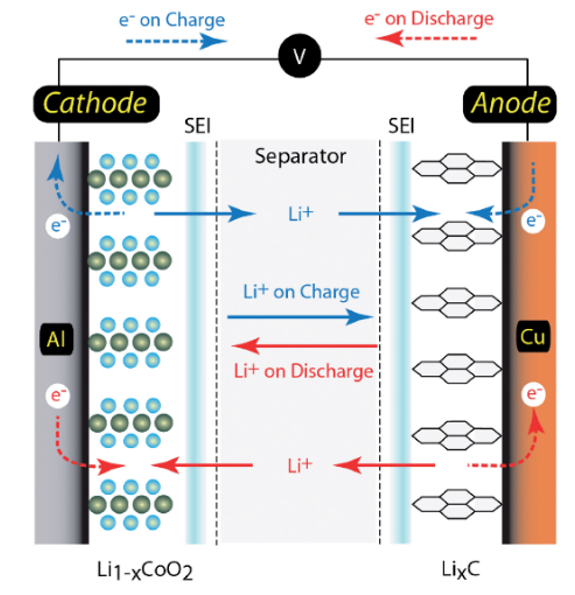Date d'évènement : 10/06/2025
Laurent Guin - LMS / Ecole polytechnique

Chemomechanics in Inelastic Media: Application to Batteries
In Li-ion batteries, the charge carrier, lithium, is periodically inserted into and removed from the electrodes. This phenomenon of solid-state diffusion is accompanied by electrode swelling and the build-up of stress. The standard material for the negative electrode, used in all commercial batteries, is graphite. Recently, silicon has attracted a lot of interest due to its specific capacity ten times higher than that of graphite but its practical use faces challenges originating in its mechanical degradation. Upon insertion of lithium, graphite electrodes typically swell by 10%, whereas silicon electrodes swell by 300% and undergo finite strain plastic deformation. In particular, a strong interplay between lithium diffusion and mechanics is observed in silicon, where lithium insertion generates stresses on the order of 1 GPa, which in turn affect the process of lithium insertion. The nature of diffusion-induced stresses in silicon has been well characterized in the literature. In contrast, there has been little study of the inverse coupling, specifically, the effect of stress on lithium insertion that occurs through the dependence of the chemical potential of lithium on stress. Yet, this is precisely the mechanism by which plastic mechanical dissipation is reflected in energy losses during a battery charge-discharge cycle. In this talk, we will first present a thermodynamically consistent model of the interplay between species diffusion and finite strain plastic deformation. Second, we will report experimental measurements of the dependence of the battery voltage (an indirect measurement of the chemical potential of lithium in silicon) on the stress state of the silicon electrode and discuss them in the light of the presented chemomechanical model. While the main features of the effect of stress on voltage are well accounted for by existing models, we will see how interesting unexplained observations require further modeling of the chemomechanical coupling in the context of inelastic deformation.
 |
‼️ Le séminaire peut être suivi en ligne suivant le lien : https://univ-amu-fr.zoom.us/j/98763634403?pwd=0ROXZX77MNFv3wGVykaFK58ZMl6znX.1 |
Le mardi 10 juin 2025 à 11h00 / Amphithéâtre François Canac, LMA
Voir en ligne : plus d’informations concernant l’orateur